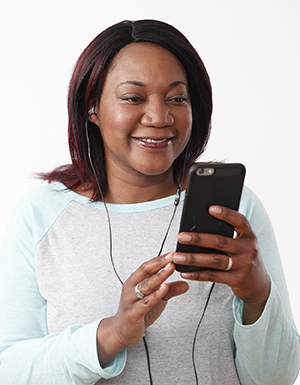Living with an Implantable Cardioverter Defibrillator (ICD)
Your ICD is a device that monitors the electrical signals in your heart. Most ICDs are well protected from interference with other electrical devices. Microwave ovens and most common household and yard appliances won't cause problems. Signals from some large electric or magnetic fields can make interference "noise" on your ICD. This can cause problems. Possible sources of interference include certain heavy equipment, strong magnets, running motors, and large tools, such as commercial arc welders. Don't work on your car with the motor running. But it's safe to drive. Check with your healthcare provider about any large, unusual power tools you use.
Signals that cause problems

To protect your ICD, be careful around:
-
Cellphones and other electronic devices. Be careful when using cellphones and other electronic devices. Keep them at least 6 inches away from your ICD. It's safest to hold all cellphones to the ear farthest from your ICD or use the speaker mode setting. Don’t carry your phone or electronic device in your chest pocket, over the ICD. Experts advise carrying your cellphone and other electronics in a pocket or bag below your waist. Most cellphones and electronic devices don't interfere with ICDs. But some cellphones and electronic devices, such as smart watches, use powerful magnets for wireless charging. These may interfere with the normal function of your ICD. The magnet used for charging or other magnet accessories can also interfere with the normal function of your pacemaker or ICD. These devices should be stored away from your ICD. Follow any other instructions from your healthcare provider or from the manufacturer of your ICD.
-
Electromagnetic anti-theft systems. These are often near entrances or exits in stores. Walking through them is OK. But don't stand near or lean against them.
-
Strong electrical fields. These can be caused by radio-transmitting towers and heavy-duty electrical equipment, such as arc welders. A running engine also creates an electrical field. It’s OK to drive or ride in a car. But don't lean over the open hood of a running car.
-
Very strong magnets. Talk with your heart care provider if another provider tells you to have an MRI. This imaging test uses strong magnets. Most modern ICD devices are considered safe for having an MRI. They are called MR-conditional devices. Even with these, you need to be careful. Magnets in big stereo or concert speakers can cause problems if you come to close to them. So can handheld security wands, like those used at airports.
If a signal interferes
The ICD could turn off or reset if it’s near the type of signals described above. You could even get a shock. If you think you were exposed to a signal like this, call your healthcare provider and explain what happened. Also call your provider if you sense any interference with your device.
Carry an ID card
You’ll be given a temporary ID card when you get your ICD. The permanent card will be mailed to you in about 6 weeks. Show this card to any healthcare provider or dentist you visit. Also show it to guards at the airport. This way, they know to follow special procedures that prevent the security wand from interfering with your ICD.
Driving safety with an ICD
ICD devices are implanted to shock the heart out of a life-threatening heart rhythm. These heart rhythms can cause fainting (syncope). Your healthcare provider will give you directions on if and when it's safe to drive after you've had one of these devices implanted. Depending on the reason you received an ICD, driving isn't advised for a period of time after the device is implanted. This may be for 1 week or up to 6 months after the device is implanted. Or if you received an appropriate shock, driving isn't advised for another 6 months. Never drive for commercial purposes after you have an ICD implanted. This is often restricted by state laws because of the high risk of passing out, and the dangers that poses while driving. Follow all instructions from your healthcare provider on if and when you can drive.
Follow up
Plan on having regular checkups with your healthcare provider to check the battery life of your ICD. Your provider can also make sure the ICD is working correctly. Depending on your device and how much your body uses the pacing functions of the ICD, you'll need a new device generator implanted at some point. That's often about every 8 to 10 years. On average, this monitoring should happen every 3 to 6 months, or as advised by your healthcare provider.
In many cases, device monitoring can be done with a remote monitor set up in your home. Battery life, lead wire condition, and various functions are checked by doing a device interrogation. During an interrogation, the device is connected to a device programmer using wireless communication or a special wand placed on the skin over the ICD. The data is sent from the device to the programmer and assessed. Most in-home device interrogation systems use wireless technology to connect the device to special equipment. The equipment records the data and sends the information to your healthcare provider.